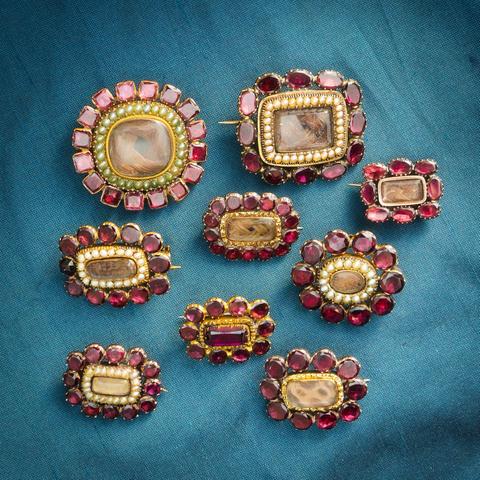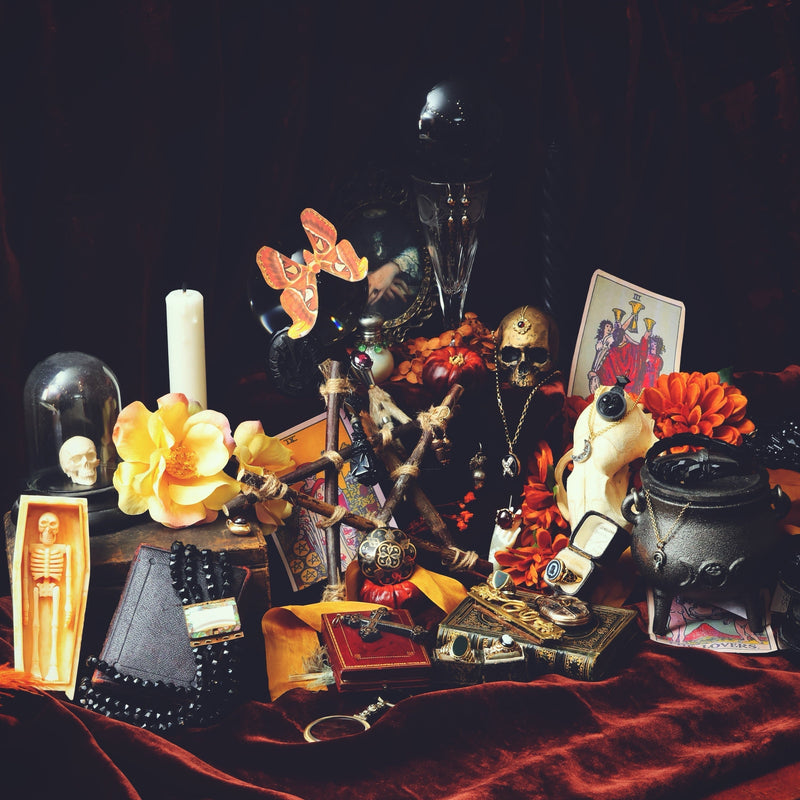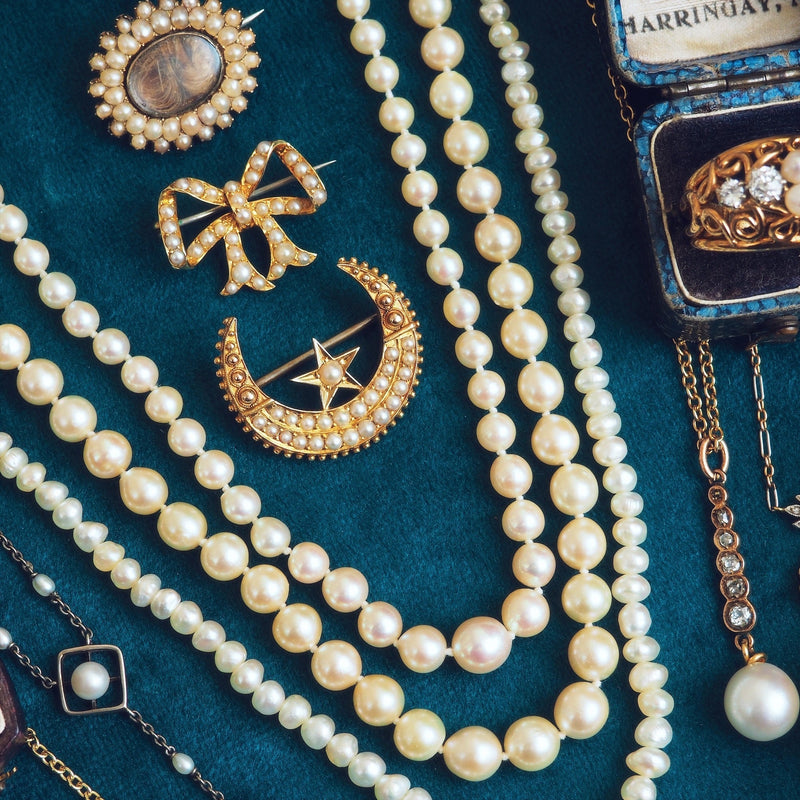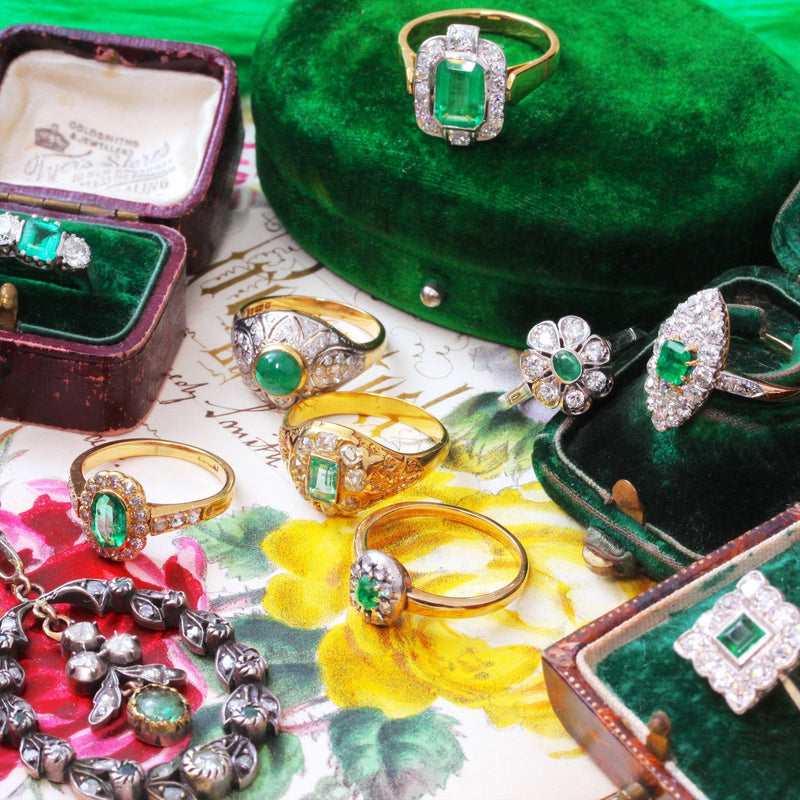

Fichu: (French) From the past participle of ficher, to fix. Indicates a light-weight kerchief folded into a triangle and fixed either with a knot or pin in the front (think a very small, triangular shawl). Used to hide excessive décolleté in day gowns and to keep the neck and chest warm in cold weather as well as for decorative purposes. Fichus were made of linen, silk or lace and could be decorated with lace or embroidery.
Relatively inexpensive to purchase, they can make a charming and decorative collection and as each pin would have been handmade you will rarely see one identical, in fact great joy is to be found in the small but delightful differences to be noticed between similar designs.
This small private collection shows examples of several different types, mostly dating to the late 18th or first quarter of the 19th century. You'll notice that most of the pins you see are shaped as ovals or round cornered rectangles with a gemstone or small locket centre which could be a receptacle for a precious lock of hair or scrap of fabric. Fastening with the simple mechanism of a 'C' clasp and tapered pin, they are always small, the average measurement you might see will be 2.5cm lengthways, earlier examples having rounded or curved backs and clasps.

Many Fichu we see date to the late Georgian era and are set with thinly flat-cut Almandine Garnets, a much favoured gemstone at the time; neatly concentric rings of half lustrous Natural Pearls and Pinky Almandine Garnets in this case, creating a floral motif with the petals and stamens represented by the pretty gems. In 'A History of Jewellery' by Joan Evans, their popularity can be dated to around 1775 and it is said that there may have been only one or two workshops in England producing these little works of art. It's certainly true that if you compare those in this collection you'll find the same style and feel to the setting of the glossy raspberry hued Garnets and tightly packed plump half Pearls in each creation.

The examples with locket compartments surrounded by Pearls in this photograph are particularly charming and would be considered sentimental jewels. It was common to snip a piece of hair as a remembrance, and in some cases these strands have been braided or formed into beautiful curls, sometimes professionally woven by hair 'artistes' into exquisite designs and set under rock crystal or glass.
We imagine that these sweet and pretty pins would often have been given as a small gift or token from a friend, sweetheart or relative on a special occasion or when moving away and as such would have been treasured possessions. In a time when travel was slow, distances seemed far greater and keepsakes were important as a representation of closeness. Enchanting in their variety of shape and form, these decorative little brooches encapsulate a wonderful culture expressed in jewels around fondness, romance and familial love.

Many other examples are precious mourning pieces and hold particular importance as mementos of loved ones passed. These are generally in black with for instance, French Jet or black enamel, sometimes with a frame of natural Pearls representing tears in this case, or an enamelled border reading 'In Memory Of' in a Gothic font, or a snake eating it's tail as a representation of eternity and the anticipated reunion after death.
These examples quite often have poignant hand engraved inscriptions to the reverse with name, age and date of death. Truly a beautiful and tangible remembrance of love; in grief, an outward symbol of that loss, and in wearing, a comfort to the bereaved. It's a shame that some of these small observances have been lost to time.
See our current collection here.
For further reading see Candice Hern's blog.








